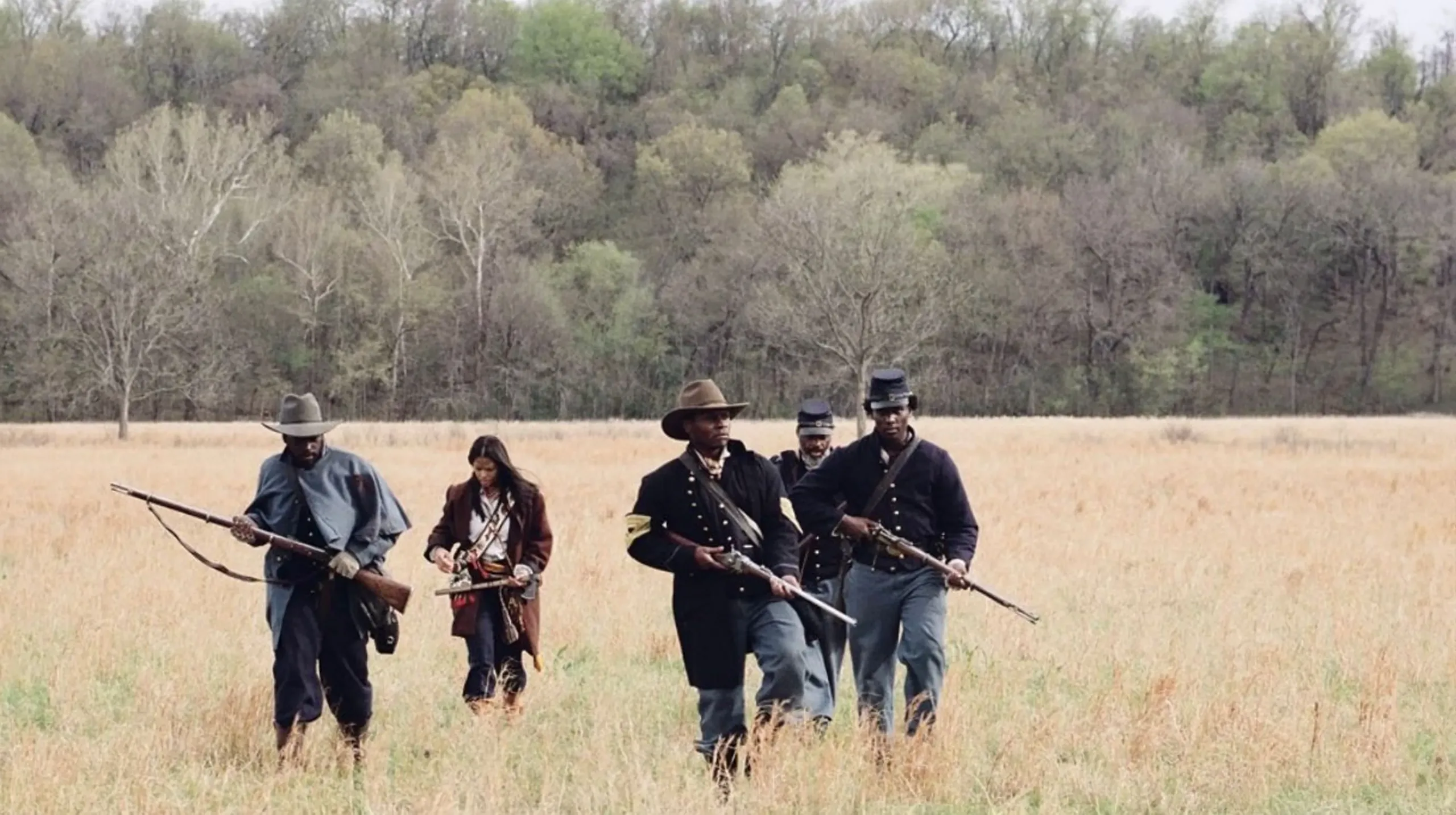The American Civil War provides a landscape of ready-made horror, a canvas of human cruelty that needs no supernatural embellishment. Resurrection Road begins on this familiar, blood-soaked ground. It presents Barabbas, a man who escaped the shackles of slavery only to find himself in the chains of the Union army, imprisoned and facing a court-martial.
His racist commanders present him with a choice that is no choice at all: lead a small unit of Black soldiers on a suicide mission into the Arkansas mountains or face the hangman’s rope. The objective is to silence the guns of Fort Defiance, a Confederate stronghold from which no Union soldier has ever returned. His reward for success is the oft-promised, seldom-delivered dream of 40 acres and a mule.
The film establishes a grim bargain, where freedom is a commodity to be earned through impossible odds, hinting that the cannons and rifles of the enemy are not the only threat lurking in the woods. An evil far older waits there.
A Company of Ghosts
At the film’s center is Malcolm Goodwin’s performance as Barabbas, a figure of raw, furious gravity. He carries the weight of past atrocities and future damnation in every glance. Yet the character is forged in such relentless brutality that he becomes an abstraction of vengeance.
His motivation is survival, but his methods are monstrous, most clearly shown when he executes one of his own men for a moment of dissent. He becomes a leader impossible to follow, a hero impossible to champion. His squad is a collection of sketches, men defined by a single trait—the devout believer, the loyal friend—who exist merely to populate a doomed patrol.
They are expendable figures in the Union’s calculus and disposable bodies for the film’s plot. They lack the bonds of camaraderie that would give their tragic fates meaning. The primary antagonist, Michael Madsen’s Quantrill, is a narrative phantom. He is the specter from Barabbas’s past but is almost entirely absent from the present, a vacuum of villainy that denies the story a critical anchor.
History’s Monsters, and Others
The idea of injecting supernatural evil into the historical atrocities of war is a potent one. It offers a way to frame human monsters against inhuman ones. Here, the concept withers on the vine. The Confederate threat gives way to vampires, introduced through whispered warnings of “bad juju” and the lore of a local indigenous woman who joins the soldiers.
The mythology of these creatures is delivered in inconsistent fragments, a set of poorly explained rules for a threat that feels arbitrary. This shift from historical enemy to supernatural predator is a missed opportunity. The script uses genre tropes as a crutch, sidestepping a deeper exploration of its own racial and historical context.
The film’s exceedingly brief 77-minute runtime leaves no space for its ideas to breathe. Interesting plot threads are dropped, and the narrative rushes forward at a breakneck pace. The body count mounts so quickly that the soldiers die before they ever live, their deaths becoming mechanical beats in a story with little pulse.
The Glare of Incompetent Filmmaking
Technical execution is where the film completely collapses. The cinematography of the nighttime scenes is baffling, bathing the Arkansas wilderness in an artificial glare that strips the night of all tension. Light sources are inexplicably bright, with modern floodlights visible in what is supposed to be a 19th-century wilderness.
The score is not an enhancement but an affliction, a grating cacophony of sound that sabotages any attempt at building atmosphere. It functions as an irritant, pulling the viewer out of the world instead of deeper into it. There is a stark contrast in the effects work. The practical gore is a highlight, with bullet wounds and torn flesh rendered with a visceral, stomach-churning realism.
This tangible horror, however, stands beside cheap and unconvincing digital effects, particularly the depiction of the fort itself. The film’s potential, rooted in a strong central performance and a promising idea, is ultimately undone by a cascade of fundamental filmmaking failures.
Resurrection Road was released in select U.S. theaters and on digital platforms, including Apple TV, on June 6, 2025. The film has been noted for its intense storytelling and strong performances, particularly highlighting Goodwin’s portrayal of Barabbas.
Full Credits
Director: Ashley Cahill
Writer: Ashley Cahill
Producers: Pantea Ghaderi, Talia Bella, Randy Wayne
Executive Producers: Randall J. Bacon, Deena Bacon, Danny R. Carmona, Dean Scheske
Cast: Malcolm Goodwin, Michael Madsen, Furly Mac, Triana Browne, Okea Eme-Akwari, Randall J. Bacon, Jeff Daniel Phillips, Ronnie Gene Blevins, Randy Wayne, Faron Ledbetter, Johannes Becht, Leila Anastasia Scott, Timothy Batten, Matthew Jaycox
Director of Photography (Cinematographer): Samuel Calvin
Editor: Tommy Aagaard
Composer: Jacques Brautbar
The Review
Resurrection Road
A potent concept and a ferocious lead performance by Malcolm Goodwin are tragically squandered by a cascade of amateurish filmmaking. Poor lighting, a grating score, and a rushed, underdeveloped script turn a promising horror-western into a frustrating exercise. While the practical gore effects are a gruesome highlight, the film is ultimately a hollow shell, a story that collapses under the weight of its own technical and narrative incompetence. It is a mission that fails before it truly begins.
PROS
- A committed and fierce lead performance from Malcolm Goodwin.
- The core concept of blending Civil War history with supernatural horror.
- Gruesome and effective practical gore effects.
CONS
- Amateurish cinematography with glaringly artificial lighting.
- An unpleasant and tension-destroying musical score.
- A shallow script with underdeveloped characters and plot points.
- A villain who is almost entirely absent from the film.
- Rushed pacing that prevents any emotional investment.
